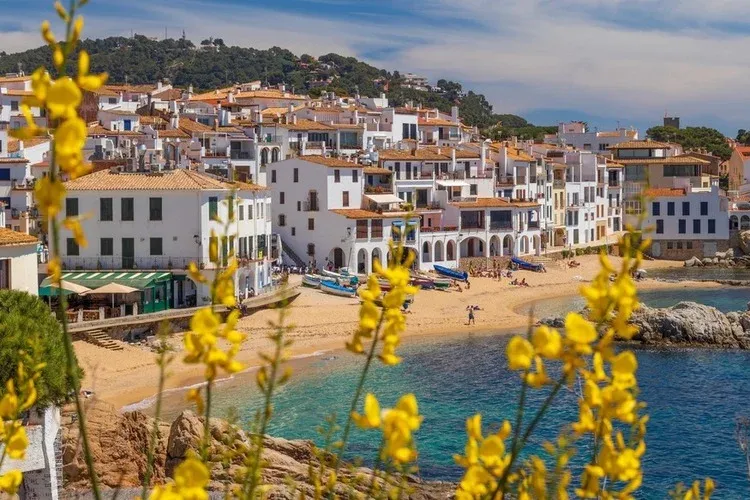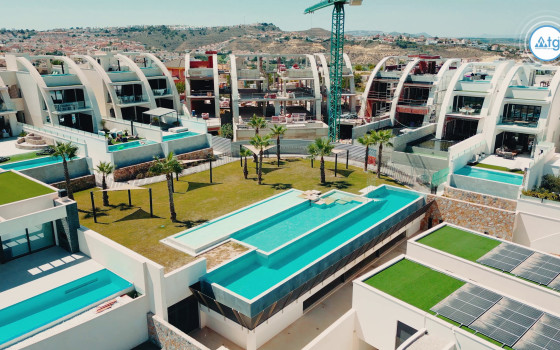Climate in Spain: Will everyone be comfortable there?
What’s on this page?
- Brief overview of the climate in Spain
- Regional Climate Variations
- The influence of climate on lifestyle in Spain
- Adaptation to climate change
Is it your cherished dream to visit many countries to enjoy the beauty of cities, sunny coasts, mountain landscapes, and green plains? You can see all this when you visit Spain. The second largest country in Europe by territory is the most climatically diverse European country and is one of the ten climatically diverse countries in the world. And if you previously had the impression that in Spain climate is only sun and sea breeze, then you should travel around the country and see its uniqueness and diversity.
_6_11zon_1714657928.webp)
If you are planning to move to Spain for permanent residence, then you should carefully collect and study information about the country’s thirteen climatic zones and living conditions in a particular region. You can find excellent housing, a good job in advance, you may really like the infrastructure of the chosen locality, but if the climate does not suit you, then everything you planned for the future most likely will not take place, because you will not be satisfied with, for example, extreme heat in summer or cold winds in mountainous areas.
Brief overview of the climate in Spain
Spain is located in the subtropical zone and its climate is generally similar to that of other Mediterranean countries. However, due to its large territory and diverse landscapes, in Spain climate varies significantly in the regions in the north and south, east and west of the country. If in Andalusia the average temperature in summer is +36⁰C, then in the province of Granada this figure is +16⁰C. In the Basque country, Galicia, and Cantabria it is not at all hot in the summer. Spain is also the most mountainous country in Europe.
The main types of climate of Spain are:
- Mediterranean;
- continental;
- oceanic;
- subtropical (semi-arid).
The Mediterranean climate is characteristic of the provinces located along the coasts from the Pyrenees Mountains to Andalusia. It has hot summers and mild, humid autumns and winters. Spring in these areas is magnificent and it is in spring that the main flows of vacationers arrive here. In areas with a Mediterranean climate, agricultural production is developed, especially the cultivation of vegetables and fruits, and viticulture.
The continental climate is characteristic of most of Spain and is characterized by temperature differences between day and night and seasons. In provinces where a continental climate predominates, the rainy seasons occur from April to June and from October to November. In the central regions of Spain, this climate is characterized by intense heat and drought in summer and cold winter with winds and frosts. Visitors from countries where there are also seasonal climate differences will be comfortable in a continental climate. After all, constant summer can also get boring!
Northern Spain has an oceanic climate with plenty of rain throughout the year. These regions are also called Green Spain. Cool summers and relatively mild winters are observed here. A semi-arid climate is typical for the southeastern regions of the country. These are the provinces of Almeria, Murcia, Alicante, Zaragoza. It is also observed in areas of the central plateaus (La Mancha, Madrid, Toledo). It is characterized by very hot, dry summers and fairly cold winters.
Average temperatures and number of days with precipitation in major cities in Spain
| City | Average annual minimum, °C | Average annual maximum, °C | Days with precipitation |
| Madrid | 10.1 | 19.9 | 60 |
| Barcelona | 15.1 | 21.2 | 79 |
| Valencia | 13.8 | 22.8 | 46 |
| Santiago de Compostela | 7.9 | 17.2 | 141 |
Regional Climate Variations
In Spain climate is worth characterizing in more detail in terms of the regions most popular among immigrants.
In Valencia Spain climate belongs to the subtropical type. The weather here is milder than in the southern regions and is comfortable for vacationers. The absence of high temperatures, a pronounced off-season and sufficient precipitation create excellent conditions both for a beach holiday and for travel and walks in numerous nature reserves and parks. You can find pleasant activities here all year round, and summer and the first half of autumn are more suitable for sunbathing on the seashore. In Valencia climate is like an eternal spring.
_4_11zon_1714658030.webp)
Marbella, located in the south of Spain in the province of Malaga, is one of the largest Spanish resorts. In Marbella climate has hot summers and warm mild winters. The average winter temperature here is +17-18⁰ C. The ideal period to visit Marbella in order to spend time not only on the beach, but also for walking, shopping, and sports is also spring. At this time, in Marbella climate is especially comfortable.
In Madrid climate is subtropical (semi-arid). There are hot summers (average temperature in July +26⁰) C and fairly cool winters. The capital is located in the very center of the country on high ground. Here in winter, snow sometimes falls at the end of December - January, and the average temperature can be around +6⁰C. Rains occur frequently from October to April, and summers are usually dry and rainless. And also the most comfortable season is spring. At this time of year, in Madrid climate is most favorable for visiting.
 (1)_3_11zon_1714658051.webp)
If you are planning a trip to Madrid for a long time, you should think carefully about your wardrobe in order to fully enjoy the splendor of palaces, museums, cathedrals and parks, and visit as many interesting places as possible located in different parts of the capital of Spain.
Malaga is called the capital of southern Spain. It is very hot here in summer, which is also an attractive factor for sun and sea lovers. In Malaga climate is sub-Mediterranean. There are more than 300 sunny days a year and little rainfall, hot summers and very mild winters. In July-August you can see the sun about 11 hours a day, the average air temperature is +31⁰C, and the water +24⁰C.
In Malaga climate is very comfortable in the winter months, when the average temperature is +17-18⁰C and you can walk around the city, visit interesting places and sit at the street table of a small restaurant.
Granada, the capital of the province of the same name, is located in the eastern part of the Granada Plain at the foot of the Sierra Nevada mountains. And although in Granada climate can be classified as something between Mediterranean and semi-arid, there are significant temperature fluctuations: summers in Granada are short and hot, and winters can be quite cold. The best times to visit Granada are spring and autumn. Then you can fully enjoy the sights of this beautiful city.

But if you are a skiing enthusiast, then it is worth coming to Granada in winter to appreciate the ski centers of the Sierra Nevada, which will benefit from the Granada climate. Bring everything you need for sports and mountain trips and you'll fully experience what Spain can be like.
In Spain, climate is considered to be the hottest in the following regions:
- Costa Blanca (province of Alicante);
- Costa Cálida (Murcia region);
- Costa del Sol (Andalusia);
- Costa Valencia (province of Valencia);
- Canary Islands.
Examples of record temperatures were set in the following cities:
| City | Maximum temperature, ⁰ C | Minimum temperature, ⁰ C |
| Murcia | 47.2 | - |
| Seville | 46.6 | -5.5 |
| Malaga | 44.0 | - |
| Granada | 42.5 | -14.2 |
| Valladolid | 40.0 | -11.5 |
The influence of climate on lifestyle in Spain
When choosing a region of the country for a vacation or permanent residence, you should take into account the climate in Spain and take into account the following factors:
- Health condition - not all people can easily tolerate heat, especially if it lasts for several months in the southern regions of Spain;
- The length of the swimming season is important for those for whom a beach holiday is the main reason for coming to Spain. Choose accommodation on the coasts of the Mediterranean Sea, the Balearic or Canary Islands and your stay on the beach will be very long;
- Those who are accustomed to seasonal changes in weather and do not want to change this habit should choose the northern provinces to feel the summer heat, the spring revival of nature and its autumn withering, and also enjoy the snowfall during the Christmas holidays.
_2_11zon_1714658132.webp)
It should be noted that the unique climate of Spain almost everywhere promotes an active lifestyle with plenty of time spent outdoors. This is one of the reasons for the highest life expectancy in Europe: Spaniards live on average 83.3 years. Playing various sports, walking and cycling, staying on the beach, having breakfast, lunch and dinner at the tables of street cafes almost all year round - all this has a positive effect on people’s health and mood.
The climate in Spain directly influences the culinary culture. Fresh, delicious produce grown by local farmers has made Spanish national dishes famous far beyond the country's borders. Be it paella with seafood or grilled meat, salad seasoned with aromatic olive oil or young wine - everything here is delicious thanks to the sun, moderate rainfall and fertile lands.
An important distinctive feature of the Spanish way of life, which appeared due to the hot climate, especially in the southern regions of the country, is the siesta. This is a short afternoon rest or nap that allows you to escape the midday heat and recuperate. This feature should be taken into account by foreigners who come to Spain, since many shops, restaurants, cafes, and offices close during lunch hours. You need to be understanding of the tradition of siesta, which is an important component of life for every Spaniard.
_5_11zon_1714658158.webp)
The Spanish climate has shaped the calendar of festivals and holidays in a certain way, without which it is impossible to imagine the culture and traditions of the country. Almost everywhere these vibrant events take place in the open air, which allows a large number of people to take part in them.
Adaptation to climate change
Climate change is a global problem for all countries of the world, including Spain. Rising temperatures, changes in precipitation patterns, and periodic abnormal colds affect ecosystems and people's lifestyles. The most significant is the increase in temperature, which negatively affects human health and puts pressure on the energy system. Recently, heavy rains have become more frequent, leading to floods that damage infrastructure, residential buildings, and agricultural land.
Agriculture is the leading sector of the Spanish economy and is highly vulnerable to the effects of climate change. Extreme heat and changes in precipitation patterns lead to reduced yields. In dry areas, people and the economy can suffer from lack of rainfall: rivers and reservoirs dry up, and groundwater levels drop.
In order to eliminate the negative consequences of climate change, the Spanish authorities are taking a number of strategic measures:
- planning water resources management taking into account the impacts of climate change;
- protection of natural habitats of animals;
- improvement of agricultural technologies;
- development of renewable energy sources;
- reduction of greenhouse gas emissions, etc.
- Citizens of the country also take part in reducing the risks of global climate change:
- use public transport and bicycles more often, abandoning personal cars;
- save water and electricity;
- plant trees and shrubs in populated areas, etc.
All these measures help reduce the negative effects of climate change in Spain.
_1_11zon_1714658188.webp)
The unique climate makes Spain even more attractive to visit. Hot coasts, moderate weather in large cities, and snow-covered slopes of the Sierra Nevada will not leave indifferent both beach lovers and those who prefer cityscapes or mountain sports. Visit different parts of Spain and enjoy its weather, natural landscapes, visit cathedrals and museums, try wine and paella, and your life will sparkle with new colors. Perhaps you are thinking about moving permanently to this amazing country.












